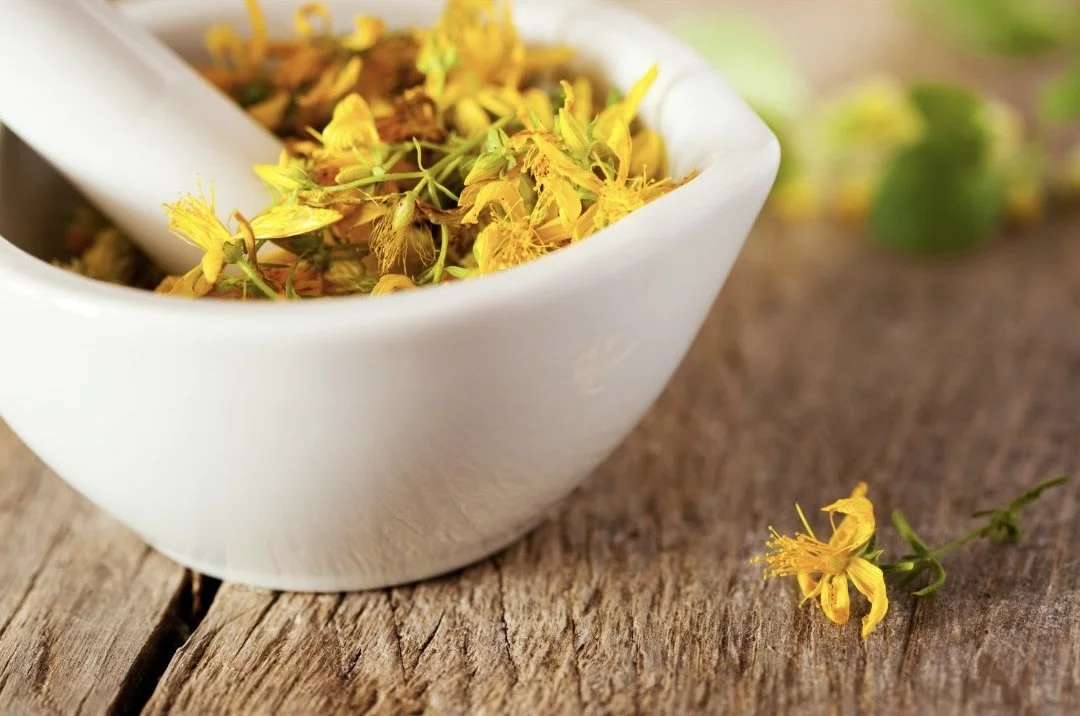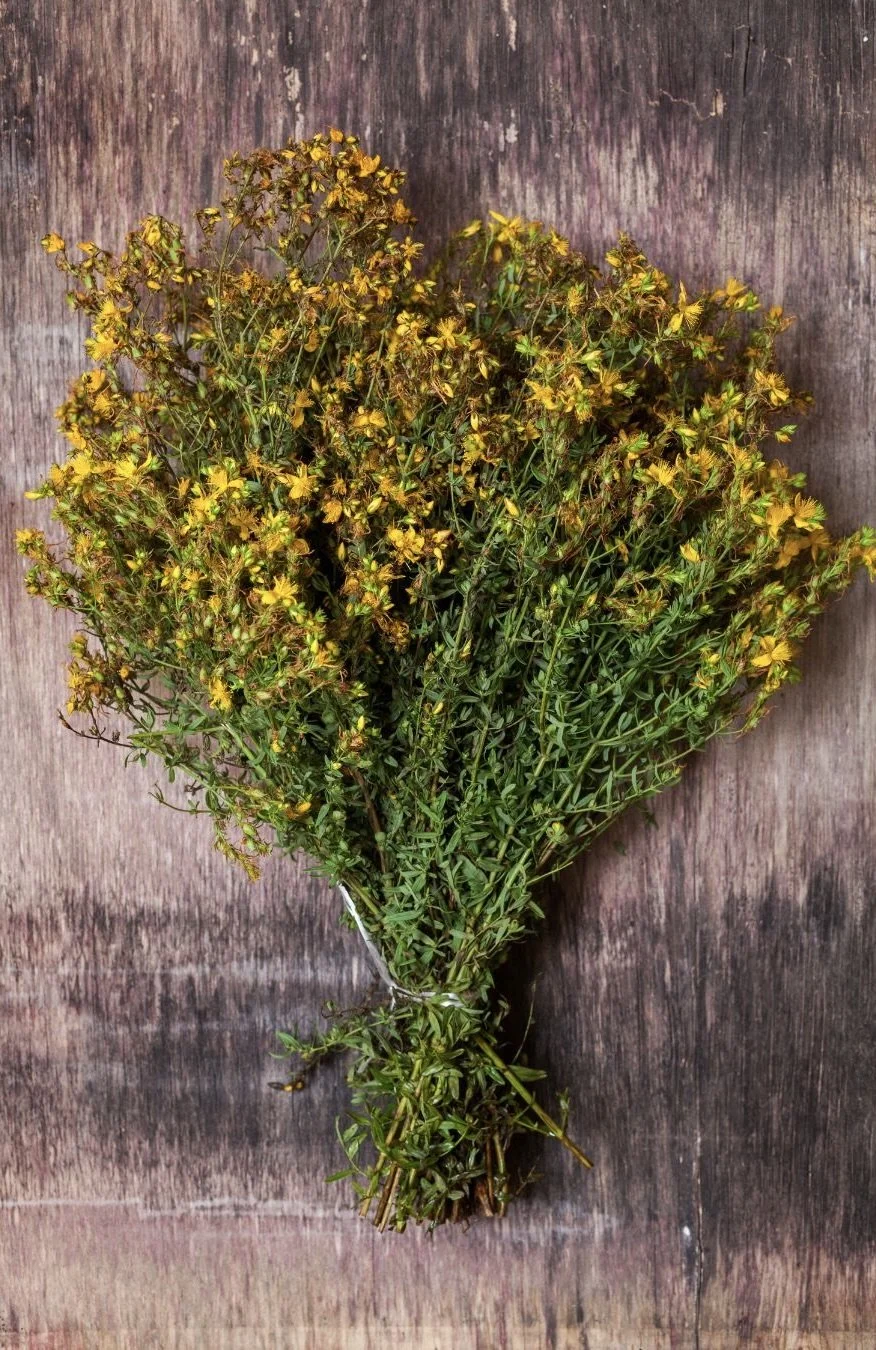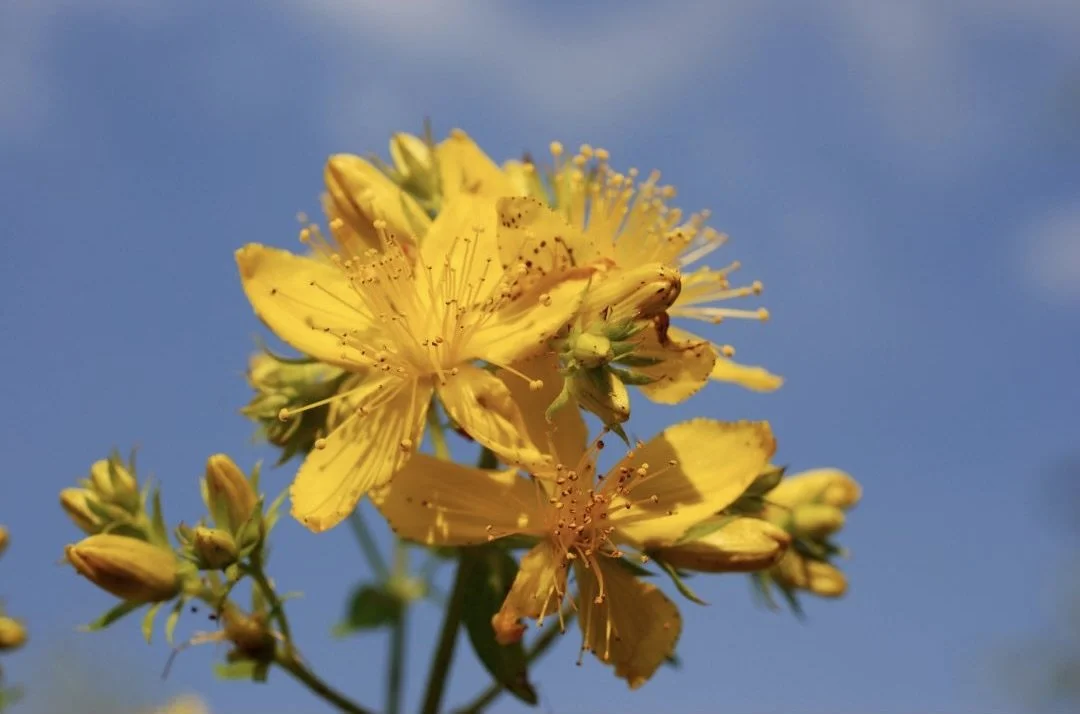To many, it’s just an ordinary weed, even a problematic one.
But to me, it’s doubles as a wild healer offering layered, intricate medicine. Growing abundantly in places where you might least expect it, often along roadsides and in wastelands, St. John’s Wort reminds me how healing often shows up quietly, in places we might overlook.
With a rich history and folklore that includes protection from negative energies and evil spirits, the latin epithet of this European native, Hypericum, originates from the words “hyper”, meaning above, and “eikon”, meaning image, which alludes to the practice of hanging it over sacred icons and images to banish evil spirits.
I first started paying attention to this bright, golden flower during my surveys as a botanist, as we would map its location, sending crews to remove the plant from native landscapes where it can spread easily and outcompete native flora. Like many plants that have weedy tendencies, Hypericum possesses an abundance of useful properties.
The genus Hypericum can be found around the world, on all continents aside from Antarctica. There are 450-500 species of this genus worldwide, with the center of diversity of the plant being in the Mediterranean region. There are tiny little plants like Hypericum anagalloides, aka Tinker plant or Creeping St John’s Wort, that live in fens and wetlands of the high Sierra and cascades, and ornamental varieties such as Hypericum calycinum, that are impressive with their giant blooms. I have even seen this genus in the mountainous regions of Nepal in my wanderings of the Himalaya. However, the widespread and ubiquitous Hypericum perforatum, easily identifiable by the tiny little glandular dots on the leaves that look like perforations when held up to the light, is the most species well studied for it’s medicinal properties.
The star-like blossoms shine in summer, and it is said that part of it’s magic is to carry a bit of the bright and light summer energies into the colder, darker months. Traditionally, St. John’s wort has been celebrated for easing depression, insomnia, and in particular, the seasonal sadness that creeps in as daylight fades: what we now call seasonal affective disorder.
It also is known to support healing from physical wounds, aches and pains, inflammation, digestive and menstrual disorders, and so much more; it has been considered a medicinally valuable plant for over 2,000 years. While it is a very potent healer, it can also have some adverse side effects (primarily, it is photosensitive - increasing sensitivity to sun exposure, and it can counteract certain medications) so it is important to check with your provider to ensure that it won’t interfere with other medications or lifestyle patterns before using it.
I’m grateful to work with this herbal ally in a deeply personal way: I harvest local St. John’s Wort with care and craft it into an elixir. This elixir has been a gentle support for many clients facing winter’s low moods, and it’s also a calm companion for general emotional balance.
If you’re curious to try it, I have a limited batch of St. John’s Wort elixir available, made from plants gathered from the wild places I know and love.
While you’re exploring wild remedies, you might also be interested in my other small-batch, locally + ethically grown and gathered, lovingly handcrafted handcrafted medicinals:
Tulsi Elixir a sacred herb inviting bliss and clarity
Wild Heart Healing Salve effective for relieving pain in muscles and joints, shrinking bruises, and speeding up wound recovery
Bite & Burn Balm soothes the skin from irritation and inflammation from the sun, insects, and allergic reactions
Arnica & Yarrow Body Oil perfect for soothing bruises, softening skin, as well as for your Abhyanga ritual on your own or with a partner
Incense Cedar & Arnica Sole Bliss Oil - antiseptic, anti fungal, and clarifying properties of cedar and healing properties of arnica make this a wonderful oil for hands and feet
All of these come from my wild wanderings, through my heart and hands, connecting you to the wild medicine around us.
Want to forage with me? I’d love to introduce you to the native and medicinal plants around you.



